Renewed optimism fuels flock growth intentions
Key points
- Sheep producers’ sentiment is the highest it has been since introduction of the survey in 2022.
- Improved seasonal outlook and strong prices are driving sentiment.
- In 2026, 52% of producers are expecting to increase their lamb flock.
Stronger sheep prices and an improving seasonal outlook have lifted producer sentiment and triggered renewed intent to increase flock sizes in 2026, according to the latest Sheep Producer Intentions Survey (SPIS).
After 18 months of dry conditions, particularly in southern states, producer confidence has lifted to an all-time high. National sentiment lifted 36 points to +78 for the next 12 months − the highest level since the survey was introduced in 2022.
This renewed optimism has translated into strong expansion intentions, with 52% of producers indicating they are likely to increase lamb numbers in 2026. Much of this growth is expected to come from improved seasonal conditions driving higher marking rates. Nearly half of those looking to expand are planning to do so by improving their lambing rates. A further 34% of producers are aiming to retain more ewes.
Marking rates mixed across breeds
While confidence is high for the year ahead, 2025 lamb marking rates were mixed. Merinos were the most affected by dry southern conditions, with marking falling to 74% − the lowest across all breed types.
In contrast, prime lamb breeds, which now account for 40% of the national lamb cohort, held steady at 115% year-on-year, while shedding breeds saw a lift from 92% in 2024 to 101% this year, indicating the resilience of meat breeds’ genetics. Producers’ positivity is largely coming from more favourable conditions. These improved conditions, paired with effective management, may lead to higher marking rates next year.
Fewer producers planning to reduce flocks
Only 28% of producers said they plan to reduce lamb numbers in 2026 − a significant improvement from 39% last October. For those planning to exit or scale back, long-term structural changes such as downsizing (40%) and retirement (26%) were in the top three drivers. Retirement is up from 22% last year and now ranking as the third most important reason.
With the average age of an Australian sheep producer now 64 years, succession planning and lifestyle shifts are playing greater roles in enterprise decisions, especially with historically strong sheep and lamb prices making now an opportune time to exit for some.
A positive outlook
The latest SPIS results show a substantial lift in producer confidence, supported by firm market conditions and improving seasonal sentiment. Many previously affected regions are seeing signs of recovery, additionally supported by the Bureau of Meteorology forecasting average rainfall across southern states over the next three months.
These insights will underpin industry forecasting for lamb and wool production, as well as inform expectations for flock composition in the year ahead.
To view the full report, visit: Sheep Producers Intentions Survey
Attribute content to: Emiliano Diaz, MLA Market Information Analyst.
Information correct at time of publication on 20 November 2025.



